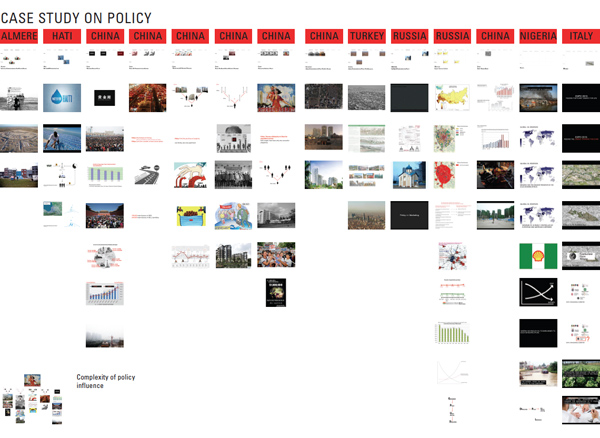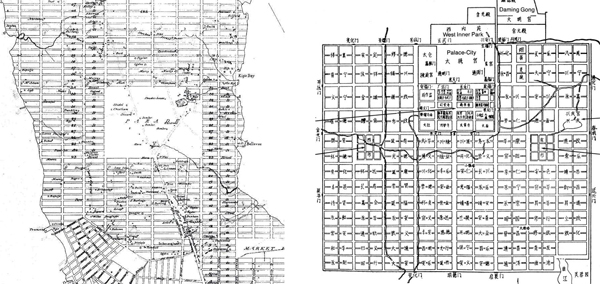The followings are the conclusions for the Masterclass MEGALOPOLI(TIC)S which is led by Reinier De Graaf (AMO) at the Berlage Institute, 2012.

Our group-topic is-Policy instead of Planning. It mainly discusses the situations that municipalities try to give shape to market driven developments whilst at the same time finding themselves entirely at the mercy of the market to make those developments happen. ‘What will be the long-term implications of this unfair battle?’ is the question needs to be answered.
After exploring the realistic influence of policy on urban planning in different areas of the world, I finally come up with the conclusions that policy as the framework stands for the balance between private and public sector. It actually acts in a way in same style as planning itself. The observations are final illustrated into abstract drawings as conclusions for 4-day research on urban planning and policy.
Conclusion 1: the block
The white block stands for public sector, and the black for the private. The white and black block are defined by the red frames which act as policy or planning.

Conclusion 2: the boundary
Policy is the free platform between public and private sector. Each side holds the responsibility to define its boundary to ensure the entirety of the platform and attach more value to the game.

Conclusion 3: the framework
Two most famous urban planning cases in the history: the Manhattan planning in 1811 and Changan planning in 618. Two proposals are strictly constructed with high standard in different periods of two prosperous empires. It does not mean the urban planning should be done in these ways. However the strength from a strong framework could be shown as a inspiration for current mega-city issue.
